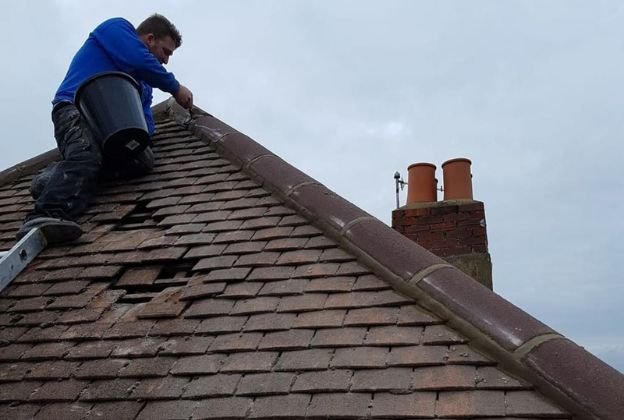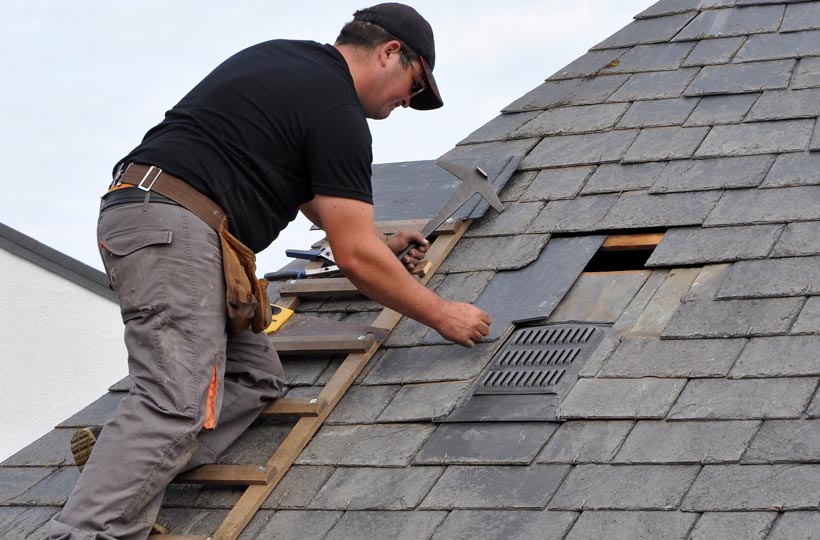Roofing Oahu: Specialist Professional Roofer for Your Oahu Home
Roofing Oahu: Specialist Professional Roofer for Your Oahu Home
Blog Article
Understanding the Different Kinds of Roofing Systems: A Comprehensive Guide for Homeowners
With an array of alternatives-- ranging from the traditional gable to the modern flat-- each kind offers unique benefits and obstacles that should align with the house owner's certain needs and environmental considerations. As we discover the intricacies of numerous roofing system types, it comes to be apparent that one dimension does not fit all; the right selection might amaze you.
Saddleback Roof
Gable roofs, characterized by their triangular shape, are amongst the most prominent roof covering styles because of their simpleness and performance in losing water and snow. This style features two sloping sides that fulfill at a ridge, allowing for effective drainage and lessening the threat of water buildup. The high pitch commonly related to gable roof coverings improves their capacity to handle hefty precipitation, making them appropriate for various environments.
In addition to their useful benefits, saddleback roofs provide visual versatility. They can be adapted to various architectural designs, from standard to modern homes. The design can additionally suit additional features such as dormer windows, which enhance all-natural light and air flow in the attic room room.
Moreover, gable roofings supply enough room for insulation, adding to power efficiency. Property owners can select from a variety of roofing products, consisting of asphalt shingles, steel, and floor tiles, additionally enhancing customization alternatives.
Regardless of their benefits, saddleback roofs may require added assistance in locations prone to high winds or heavy snowfall. On the whole, the saddleback roof stays a favored choice because of its blend of functionality, sturdiness, and aesthetic appeal.
Apartment Roofs
Flat roofs are commonly recognized for their minimal design and functional applications, especially in commercial and industrial setups (oahu roofing). These roofings feature a nearly horizontal or straight surface, which enables simple building and construction and flexible room use. While they might lack the aesthetic allure of angled roofs, flat roofing systems use various benefits, specifically in urban atmospheres where maximizing area is vital
One of the primary advantages of level roofing systems is their ease of access. Home owners can make use of the roof covering space for numerous objectives, such as roof gardens, terraces, or photovoltaic panel installments. In addition, level roof coverings are commonly a lot more economical to preserve and set up contrasted to their sloped equivalents, as they call for fewer materials and labor.
Usual materials utilized for level roofs consist of built-up roof (BUR), modified asphalt, and single-ply membrane layers, each offering distinctive advantages. Generally, level roof coverings offer as a useful and adaptable option for many homeowners and services alike.
Hip Roofings
Hip roofing systems are characterized by their sloped sides that converge at the top, forming a ridge. This layout is unique from gable roofing systems, as all four sides of a hip roof slope downwards toward the walls, providing an extra steady structure. The angle of the inclines can vary, permitting flexibility in architectural appearances and performance.
One of the main advantages of hip roof coverings is their capability to withstand hefty winds and negative weather problems. The sloped surface areas enable far better water drainage, lowering the danger of leaks and water damage. In addition, hip roofings offer raised attic area, which can be used for storage and even exchanged comfortable locations.
Nevertheless, building a hip roof covering can be a lot more complicated and pricey than simpler visit this site roof kinds, such as gable roofing systems. The extra product and labor associated with producing the inclines and guaranteeing proper look at here architectural honesty can lead to greater expenditures. In spite of these disadvantages, lots of property owners favor hip roofing systems for their toughness, visual appeal, and possibility for power performance.
Mansard Roof Coverings
Mansard roofs, typically acknowledged by their distinct four-sided layout, attribute 2 inclines on each side, with the lower slope being steeper than the upper. This building style, originating from France in the 17th century, is not only visually enticing however practical, as it makes the most of the functional area in the top floors of a building. The steep reduced slope enables for more clearance, making it an ideal selection for attic rooms or loft spaces, which can be exchanged living rooms.
Mansard roof coverings are characterized by their versatility, suiting numerous building designs, from typical to modern. They can be built with different materials, including asphalt shingles, slate, or steel, providing homeowners with a range of alternatives to match their preferences and budget plans. In addition, the design enables the assimilation of dormer windows, improving all-natural light and ventilation in the top degrees.
Nevertheless, it is vital to think about the possible downsides. Mansard roofings might need more upkeep as a result of the intricacy of their design, and their steep slopes can be testing for snow and rain runoff. Overall, mansard roofing systems incorporate sophistication with usefulness, making them a popular selection among homeowners looking for distinctive building attributes.
Shed Roof Coverings
As home owners increasingly seek simpleness and performance in their building layouts, dropped roof coverings have arised as a popular choice. Defined by a solitary sloping airplane, a shed roof presents a minimalist visual that matches different home designs, from contemporary to rustic.
One of the primary advantages of a shed roof covering is its simple building and construction, which typically translates to decrease labor and product prices. This design permits for reliable water drain, decreasing the threat of leakages and water damages. Additionally, the upright incline gives ample space for skylights, enhancing all-natural light within the inside.
Shed roofing systems likewise use convenience in regards to use. They can be efficiently integrated into additions, garages, or outdoor frameworks like sheds and pavilions. Moreover, this roof design can accommodate various roofing products, including metal, asphalt roof shingles, and even environment-friendly roofing systems, lining up with environmentally friendly campaigns.
However, it is important to take into consideration local climate browse around here conditions, as heavy snow loads may require adjustments to the roof covering's angle or framework. On the whole, dropped roofings present a sensible and cosmetically pleasing option for home owners looking to optimize performance without compromising style.
Verdict


Gable roofings, defined by their triangular form, are amongst the most prominent roof covering styles due to their simpleness and efficiency in losing water and snow. oahu roofing. The steep pitch commonly connected with gable roofings improves their capacity to handle heavy precipitation, making them suitable for various environments
While they may lack the aesthetic allure of pitched roofs, level roofings supply many advantages, particularly in city atmospheres where making best use of space is crucial.

Report this page